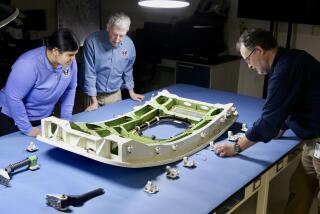FAA Orders New Rivets in Boeing 737s : Costly Measure Affects 291 Oldest Jetliners
- Share via
WASHINGTON — The Federal Aviation Administration on Thursday ordered the replacement of 7,200 rivets in every older Boeing 737 jetliner to guard against a possible repeat of an accident last spring in which an Aloha Airlines jet lost a third of its roof in flight.
The far-reaching and costly order affects the 291 oldest Boeing jets and requires that the work be completed within three years.
In the meantime, airlines are required to electronically inspect rivet holes for signs of cracking, and until the inspections are completed, the jets are restricted to flying no higher than 26,000 feet. Flying at lower altitudes reduces stress on the fuselage by limiting the amount of pressurization and depressurization of the cabin.
The order is the first since the FAA required emergency inspections of older 737s immediately after the Aloha accident on April 28. Two weeks ago, a 30-inch-long series of cracks was discovered on a 19-year-old Continental Airlines 737 while the plane was in Los Angeles for routine painting.
“I would look at this as the first of a number of things to come,” said Anthony J. Broderick, the FAA’s associate administrator of aviation standards. “I would hope this is atypical, as it is expensive and burdensome.”
The rivet replacement on each 737 is estimated to require 2,016 hours of work, at an estimated cost of $800,000, on each plane. Approximately 177 of the jetliners are flown domestically, and of them, 77 have had some rivet work since the Aloha accident, Broderick said.
After a flight attendant was swept to her death and 61 passengers injured when the Aloha Airlines jet’s top peeled back during the April flight, the FAA ordered rivet replacements for each 737 before it made 80,000 flights.
The FAA now is requiring that the oldest 737s--those that have made 70,000 or more flights--be repaired within six months. The repair time schedule for the other planes is spread out incrementally, with the requirement that the youngest planes--those that have made 40,000 flights--be repaired within three years.
The rivets are located along the overlapping sections where two pieces of fuselage are spliced together. The government is requiring that the type of rivet be changed to one with a protruding head, which is less likely to contribute to cracking.
More to Read
Inside the business of entertainment
The Wide Shot brings you news, analysis and insights on everything from streaming wars to production — and what it all means for the future.
You may occasionally receive promotional content from the Los Angeles Times.










